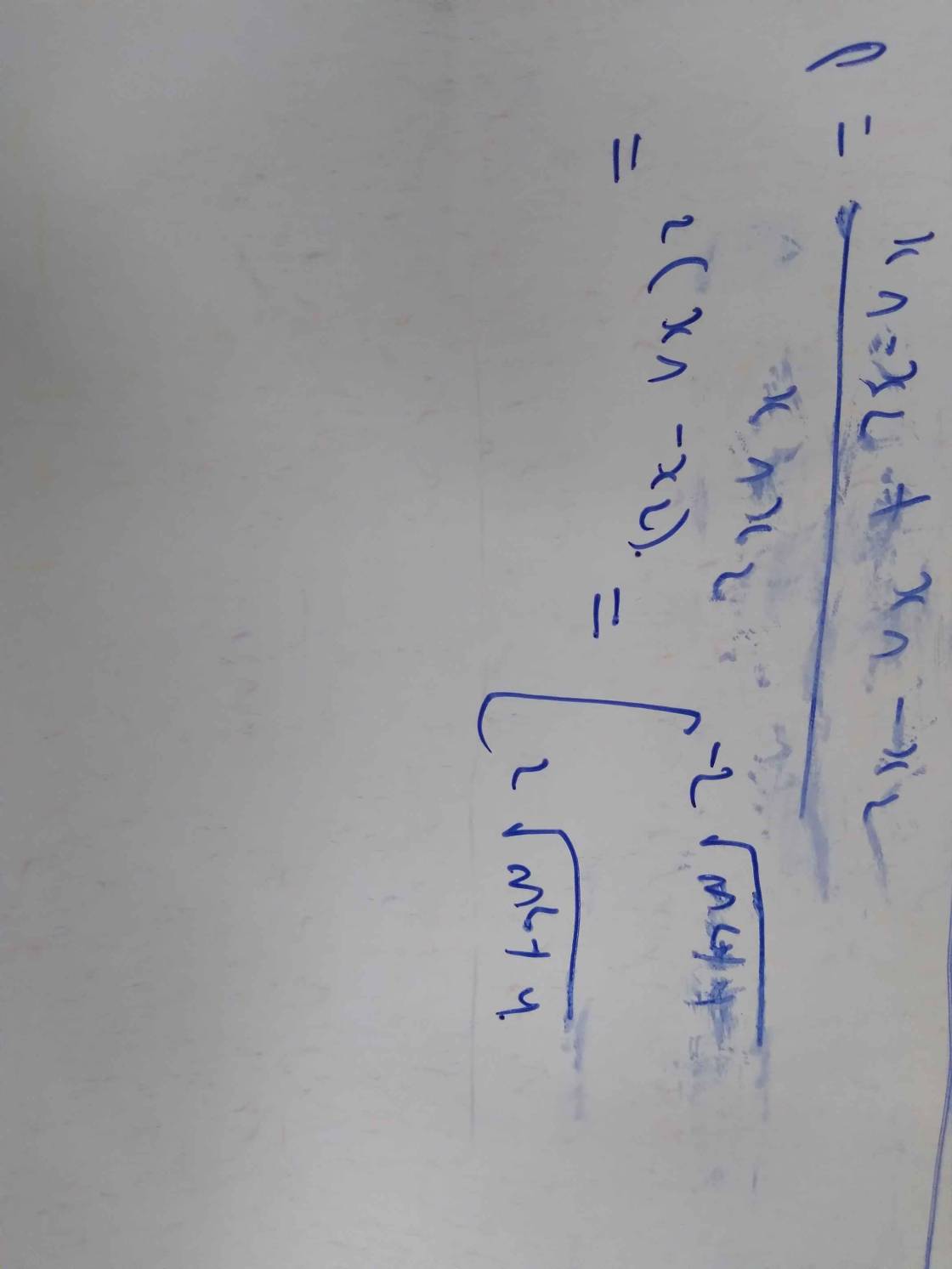cho pt x^2-ax+1=0.giả sử pt có 2 nghiệm x1,x2.tính giá trị biểu thức S=x1^5+x2^5 theo a
Hãy nhập câu hỏi của bạn vào đây, nếu là tài khoản VIP, bạn sẽ được ưu tiên trả lời.


1. Theo hệ thức Vi-ét, ta có: \(\left\{{}\begin{matrix}x_1+x_2=-\dfrac{4}{3}\\x_1.x_2=\dfrac{1}{3}\end{matrix}\right.\)
\(C=\dfrac{x_1}{x_2-1}+\dfrac{x_2}{x_1-1}=\dfrac{x_1\left(x_1-1\right)+x_2\left(x_2-1\right)}{\left(x_1-1\right)\left(x_2-1\right)}\)
\(=\dfrac{x_1^2-x_1+x_2^2-x_2}{x_1x_2-x_1-x_2+1}=\dfrac{\left(x_1+x_2\right)^2-2x_1x_2-\left(x_1+x_2\right)}{x_1x_2-\left(x_1+x_2\right)+1}\)
\(=\dfrac{\left(-\dfrac{4}{3}\right)^2-2.\dfrac{1}{3}-\left(-\dfrac{4}{3}\right)}{\dfrac{1}{3}-\left(-\dfrac{4}{3}\right)+1}=\dfrac{\dfrac{22}{9}}{\dfrac{8}{3}}=\dfrac{11}{12}\)
\(1,3x^2+4x+1=0\)
Do pt có 2 nghiệm \(x_1,x_2\) nên theo đ/l Vi-ét ta có :
\(\left\{{}\begin{matrix}S=x_1+x_2=\dfrac{-b}{a}=-\dfrac{4}{3}\\P=x_1x_2=\dfrac{c}{a}=\dfrac{1}{3}\end{matrix}\right.\)
Ta có :
\(C=\dfrac{x_1}{x_2-1}+\dfrac{x_2}{x_1-1}\)
\(=\dfrac{x_1\left(x_1-1\right)+x_2\left(x_2-1\right)}{\left(x_2-1\right)\left(x_1-1\right)}\)
\(=\dfrac{x_1^2-x_1+x_2^2-x_2}{x_1x_2-x_2-x_1+1}\)
\(=\dfrac{\left(x_1^2+x_2^2\right)-\left(x_1+x_2\right)}{x_1x_2-\left(x_1+x_2\right)+1}\)
\(=\dfrac{S^2-2P-S}{P-S+1}\)
\(=\dfrac{\left(-\dfrac{4}{3}\right)^2-2.\dfrac{1}{3}-\left(-\dfrac{4}{3}\right)}{\dfrac{1}{3}-\left(-\dfrac{4}{3}\right)+1}\)
\(=\dfrac{11}{12}\)
Vậy \(C=\dfrac{11}{12}\)

\(x^2 - 4x - 3 = 0\) có 1.(-3) < 0
=> Phương trình có hai nghiệm phân biệt
Áp dụng hệ thức Vi-et có \(x_1 + x_2 = 4\) \(; x_1x_2 = -3\)
Mà \(A = \dfrac{x_1^2}{x_2} + \dfrac{x_2^2}{x_1}\)
\(= \dfrac{x_1^3 + x_2^3}{x_1x_2}\)
\(= \dfrac{(x_1 + x_2)(x_1^2 - x_1x_2 + x_2^2)}{x_1x_2}\)
\(=\dfrac{(x_1+x_2)[(x_1 +x_2)^2 - 3x_1x_2]}{x_1x_2}\)
\(=\dfrac{4.[4^2 - 3.(-3)]}{-3}\)
\(= \dfrac{-100}{3}\)

Theo Vi-ét, ta có:
\(\left\{{}\begin{matrix}x_1+x_2=-\dfrac{b}{a}=-\dfrac{3}{4}\\x_1x_2=\dfrac{c}{a}=-\dfrac{1}{4}\end{matrix}\right.\)
\(A=-2\left(x_1-2\right)\left(x_2-2\right)\)
\(=\left(-2x_1+4\right)\left(x_2-2\right)\)
\(=-2x_1x_2+4x_1+4x_2-8\)
\(=-2x_1x_2+4\left(x_1+x_2\right)-8\)
\(=-2.\left(-\dfrac{1}{4}\right)+4.\left(-\dfrac{3}{4}\right)-8\)
\(=\dfrac{1}{2}-3-8\)
\(=\dfrac{1}{2}-11\)
\(=-\dfrac{21}{2}\)

Lời giải:
a) $\Delta=(m+1)^2-(2m-2)=m^2+3>0$ với mọi $m\in\mathbb{R}$ nên PT luôn có 2 nghiệm phân biệt với mọi $m\in\mathbb{R}$
b) Áp dụng định lý Viet: \(\left\{\begin{matrix} x_1+x_2=2(m+1)\\ x_1x_2=2m-2\end{matrix}\right.\)
Khi đó:
\(E=x_1^2+2(m+1)x_2+2m-2=x_1^2+(x_1+x_2)x_2+x_1x_2=x_1^2+x_2^2+2x_1x_2=(x_1+x_2)^2=4(m+1)^2\)

